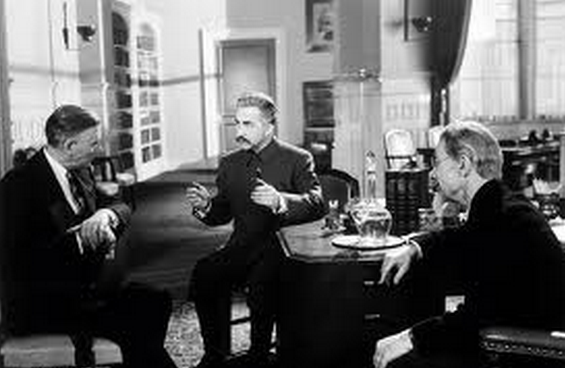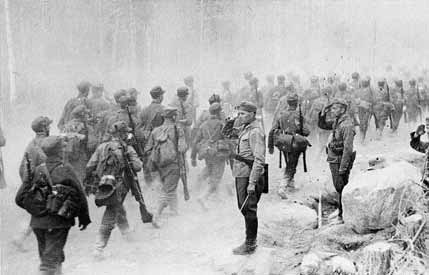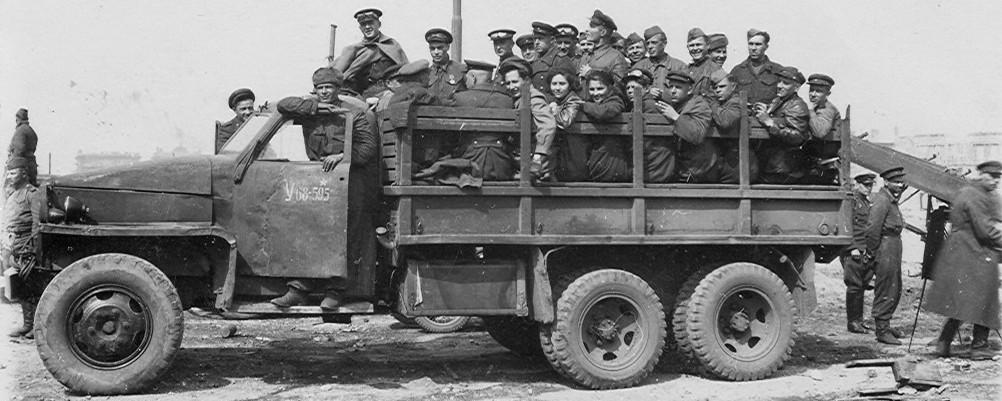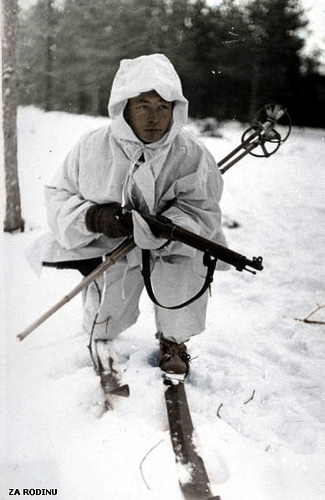The Finnish blogger files the following book review of Diana West’s American Betrayal with the Tundra Tabloids.
UPDATE: Vasarahammer adds:
I did not intend to read Diana’s book, because of the lack of time and the subject matter that was intended for the American audience. I also thought that I could get an adequate overview of the content by reading reviews and following the discussion concerning the book.
However, in the end I just decided that I must get it. The reviews and the discussion around the book had raised my curiosity to the point that there was no other choice left but to get it and read it. After reading the book I’m glad I did. Whether you agree with the conclusions or not, the book provides a coherent picture and explains logically why the WW II in Europe developed as it did. It asks the right questions and provides a logical answer to each question. I don’t have access to the source material, so I cannot say if it has been interpreted in the way it should.
I did not intend to read American Betrayal at all and I would not have read the book if Ron Radosh had not published his infamous takedown at Frontpage. At that point, I knew that the book had hit a nerve somewhere and shattered the comfortable illusions of ”Good War” that America won against a heinous enemy with the help of ”Uncle Joe” and the Red Army.
The Winter War
My home country Finland is mentioned by name a few times in the book and portrayed as a victim of the Soviet Union, which together with Nazi Germany conspired the start of World War II. The same point is made very well in the movie Soviet Story. The USSR leaders should have been among the accused in the Nuremberg trial instead of being on the prosecution side. The USSR invaded Poland the same time as Nazi Germany but somehow escaped any responsibility for starting the war.
 At the time the secret protocol of the Molotov-Ribbentrop Pact was not commonly known. In that protocol Finland was assigned to the Soviet ”sphere of influence”. Some Americans may know that the consequence of this pact was the Winter war that started on the 30th of November 1939. When the USSR invaded, Finland received a lot of sympathy from around the world but very little military assistance. The Soviet aggression was widely condemned and the USSR was expelled from the League of Nations. The Finns were left alone to fight against a vastly more powerful enemy.
At the time the secret protocol of the Molotov-Ribbentrop Pact was not commonly known. In that protocol Finland was assigned to the Soviet ”sphere of influence”. Some Americans may know that the consequence of this pact was the Winter war that started on the 30th of November 1939. When the USSR invaded, Finland received a lot of sympathy from around the world but very little military assistance. The Soviet aggression was widely condemned and the USSR was expelled from the League of Nations. The Finns were left alone to fight against a vastly more powerful enemy.

Even if the Finnish Army had shortage of equipment and military hardware it managed to stall the invasion and achieve some notable victories the most famous of which is the Battle of Raate Road, in which the Finns destroyed the 44th division of the Red Army. In the end, the brave but tired Finnish Army had to yield when the Red Army managed to break the Mannerheim line and advanced towards the city of Viipuri. The resulting Moscow treaty was considered harsh and what was most depressing was the fact that very little help reached Finland and even that arrived late. Nazi Germany, the ally of the Soviet Union, had blocked most of armament shipments.
There is a clip from American propaganda movie Mission to Moscow, which could as well be from a Soviet propaganda movie. The speaker who tells the crowd that the Soviet Union ”keeps its word” is confronted by a sceptical man in the crowd asking ”how about poor little Finland?”. At that point the speaker utters a lie that might as well have come from the mouth of Molotov himself:

”Russia knew she’s going to be attacked by Hitler so Russia asked Finland’s permission to occupy strategic positions to defend herself against German aggression and offered Finland twice as much territory in exchange but Hitler’s friend Mannerheim refused and the Red Army moved in.”
Another man in the crowd continues:
”I wonder why these things are kept from us.”
In reality, Finland’s fate had been sealed in the Molotov-Ribbentrop pact. The goal of the USSR was from the very beginning to make Finland a Soviet vassal and later annex the country to the Soviet Union. The Soviets even set up their own puppet government called ”The People’s Government of Finland” (or Terijoki government as it is mostly called in Finland) on the first day of the war. Unlike Finland, the Baltic states conceded to Soviet proposals and ended up being incorporated into the Soviet Union in 1940. There the Soviets proceeded the usual way. First kill a couple of thousand people and then send the rest to the hostile elements of the Gulag. In the first year of occupation the total number of executed, conscripted or deported was around 125 000: 60 000 in Estonia, 35 000 in Latvia and 30 000 in Lithuania.
Yes, the Soviet Union could be trusted, but not in the way Mission to Moscow implies. If we look at ”Uncle Joe” from today’s perspective, Saddam Hussein by comparison, was a choir boy. The criminal nature of the Soviet regime was well known at the time when the USSR qualified as a recipient of Lend and Lease aid. I wonder why these things were kept from the Americans.
Mission to Moscow was a Hollywood production that was mentioned in American Betrayal. The movie is based on the book by Joseph E. Davies, a former US ambassador to the Soviet Union and also a character who appears in Ms. West’s book. By the time the movie was made in 1943 the true nature of the Soviet regime should not have been a secret, which is why the movie does its best explain away some of the most obvious Soviet crimes by supplanting the truth with a shameless lie.
The Continuation War

The Finnish experience of World War II consists of three separate wars. The Winter War was the first one and was followed by the Continuation war which started at the same time as Hitler’s Operation Barbarossa and ended in 1944 when the Finns sued for peace and had to cede territory to the USSR once again.
The Continuation War is morally problematic for Finland because of the alliance with Nazi Germany as co-belligerents, which is why Finns don’t like to talk about it with foreigners as much as they do the Winter War.
However, small countries rarely have good choices available at the time of crisis, only bad and even worse ones. In 1941 Finland had basically three options: ally with the USSR, ally with Germany or starve and wait for German invasion. The third option is obviously unattractive and impossible, since Finland was dependent on German grain imports at that time. The first option was impossible, because the public would never have accepted it and there would probably have been a German invasion just like in the first option. So the only remaining alternative was to become a German ally and try to have some influence in the eventual fate of the nation. Neutrality was not an option, because Finland did not have any natural resources that either of the warring parties wanted. Sweden could stay neutral as long as they supplied raw materials to the German military industry.

But it is the Continuation War that has most to do with Lend and Lease. Port of Murmansk lies in the inlet of Barents Sea called Kola bay. The port has the advantage of being ice free all year, which is why it became one of the main recipient ports of Lend and Lease aid. The other Russian nothern port Archangelsk lies further away on the shore of White Sea and is not free of ice all year.
There is also a railway called Kirov Railway that connects Murmansk to the city of Leningrad (now St. Petersburg). The port of Murmansk and Kirov Railway were one of the four main supply lines of the Western aid. The others were the Persian route, the Pacific Route and the port of Arkhangelsk. During the first years of the war Finnish troops advanced quickly to the old border and further away to the Soviet territory coming close to the Kirov Railway.
Finnish Army sent patrols behind enemy lines that occasionally managed to cut down the railway line and destroy some of the shipments containing the American aid. However, most of the aid got through and the Finnish soldiers on the frontline discovered that the Red Army soldiers had canned food made in America and that they used American Studebaker trucks to move their troops.

The patrols did not do any lasting damage to the Kirov Railway, which was quickly repaired partly because the Soviets received 90 percent of the railway tracks they needed through the Lend and Lease program. They also received 2000 locomotives while they managed to produce only 92 locomotives themselves in the period between 1942 and 1945. In the middle of 1930’s the Soviet railways had approximately 20 000 locomotives.
Economics of war
The true effect of Lend and Lease aid on the Soviet war effort is difficult to estimate, but in the wartime logistics the impact was significant and probably decisive. Without Lend and Lease the Soviets would not have been able to march to Berlin so quickly if at all. They would certainly not have conquered such a large part of the Eastern Central Europe as they did.
Post-revolutionary Russia was economically and industrially backward. Within a couple of decades it had become a major industrial power. It is inconceivable that the Soviets could have done this on their own. In decades before World War II it was the Germans first and later the Americans that provided the bulk of industrial and production competencies to the Soviet Union in the form of various economic assistance contracts.
 Americans helped to build the GAZ automobile plant in the city of Gorki (now Nizhnyi Novgorod). The plant manufactured copies of Ford trucks in assembly lines very similar to the ones in the US. This was because Soviet engineers visited Ford’s Rogue River plant in Detroit and it was Ford who taught the Soviets the economics behind mass production techniques, which turned out to be very useful during the war.
Americans helped to build the GAZ automobile plant in the city of Gorki (now Nizhnyi Novgorod). The plant manufactured copies of Ford trucks in assembly lines very similar to the ones in the US. This was because Soviet engineers visited Ford’s Rogue River plant in Detroit and it was Ford who taught the Soviets the economics behind mass production techniques, which turned out to be very useful during the war.
The Soviet system with central command planning did not encourage innovation, so Russian manufacturing relied heavily on Western designs to be used as a template. Often this resulted in crude copies of Western originals, but those copies turned out to be sometimes more effective in battlefield conditions than their technologically more advanced German counterparts. A perfect example of this is Soviet T-34 tank that had a Christie suspension designed in America.
Ms. West refers to Christopher Andrew’s book Mitrokhin Archive several times. In that book Andrew states that in the Cold War both sides used the same technology. The Soviets copied the Western technology they had obtained either through espionage or civilian economic agreements. The pattern of technology transfer from the West to the USSR remained the same throughout the existence of the USSR.
”Uncle Joe” the sole winner

The economics of war was not the main subject of Ms. West’s book, but the decision-making in the Roosevelt administration, the results of which consistently benefited mainly the Soviet Union. American Betrayal claims that the Soviet infiltration of the Roosevelt administration caused this. I am not an expert and I don’t intend to argue whether Harry Hopkins was agent 19 or not, because it does not really matter if he was a useful idiot or paid Soviet agent. The post war situation speaks for itself with half of Europe in Soviet hands and Germany devastated by Allied bombs.

The one thing in the book that should shock Americans is the fate of the US military personnel that were captured in Soviet-held territory. The US administration tried to plead with Stalin to release these captured US soldiers, but pleas fell on deaf ears, the war was over and the Americans no longer had any leverage to use in negotiations. Stalin was famous for his callous disregard for human life, so the American POWs had to spend the rest of their lives in the Gulag waiting in vain for the US government to help them.
After reading the book it is difficult to regard FDR as a great wartime president and D-Day as a significant event that changed the course of war. It went just like ”Uncle Joe” wanted right to the very end.


